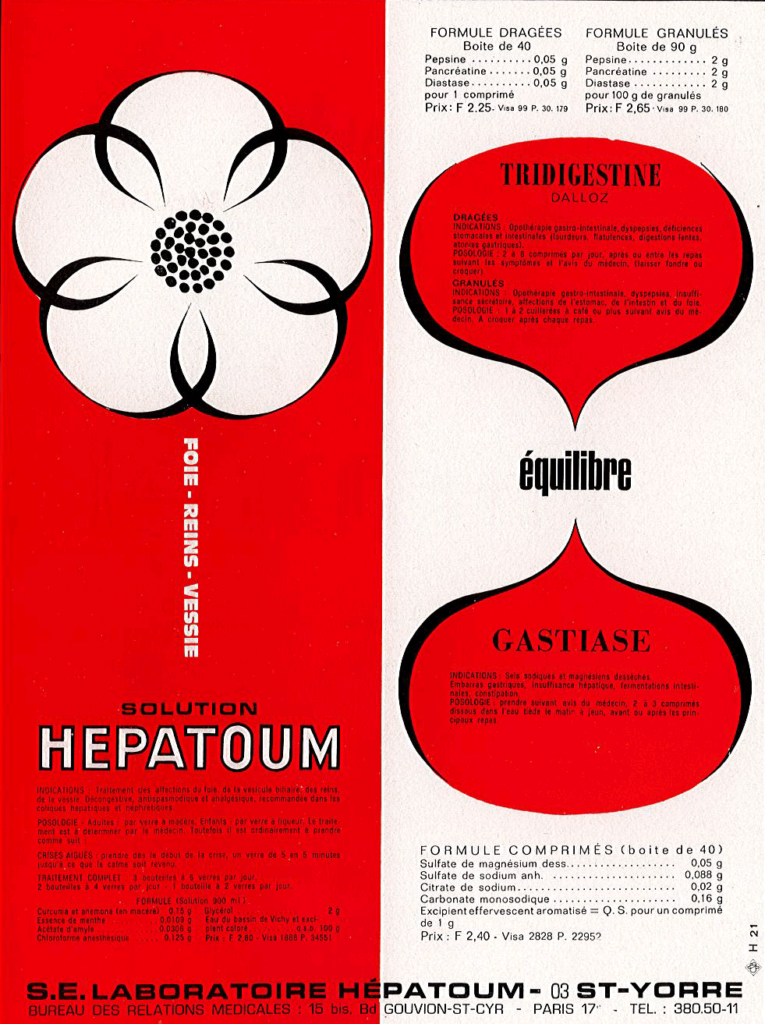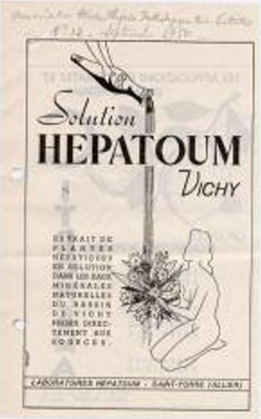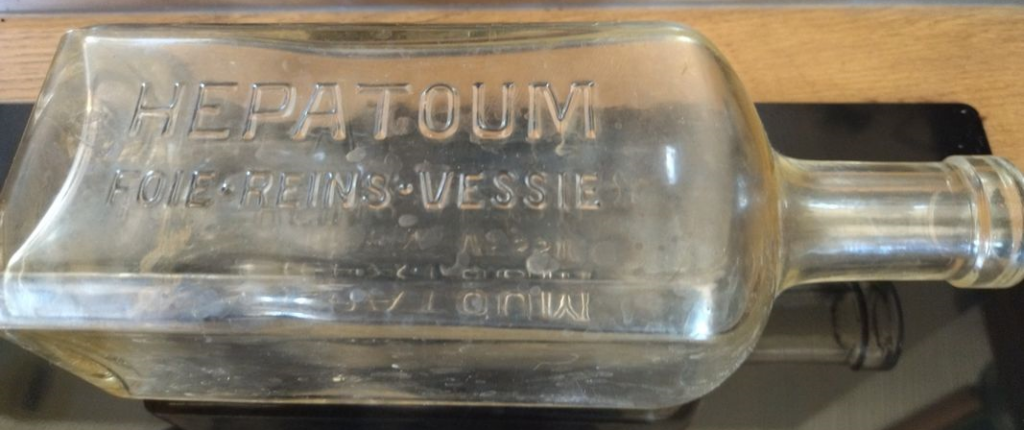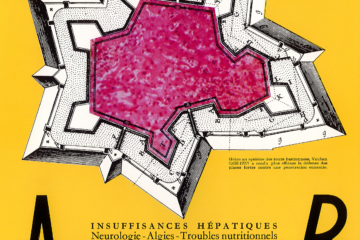A famous drinkable yellow solution commonly used in the 1970s to promote bile excretion and to facilitate digestion, especially after heavy meals. The drug contained hydroalcoholic extracts of two plants: Curcuma longa L. (turmeric) and Anemone pulsatilla L. (European Pasque flower, or Pulsatilla vulgaris Mill.). It contained also a mint essential oil and a quinoline yellow dye (E104). The two herbs are commonly used in folk medicine to treat gastrointestinal disorders including liver disease, acidity, dyspepsia, ulcers, indigestion, flatulence and other symptoms..


Extracts of flowers and leaves of Pulsatilla vulgaris exhibit spasmolytic effects, linked to the presence in the extracts of spasmolytic agents such as stigmasterol. Pulsatilla samples were shown to contain many bioactive principles, including campesterol, sitosterol and stigmasterol, protoanemonin and the dimer anemonin, and the steroids sitostenone and tremulone. Pulsatilla contains also ranunculin, different triterpene saponins and flavonoids. The fresh plant is extremely irritating to the skin, gastrointestinal tract and mucous membranes but derived products (including homeopathic preparations) remain well used today, notably to improve gut health, as a medicinal product for stomach and intestinal spasms. The famous drinkable yellow solution Hepatoum® remains on the market today but with a new formulation containing alverine citrate which is a smooth muscle relaxant. The product is sold to facilitate bile elimination and digestion.




